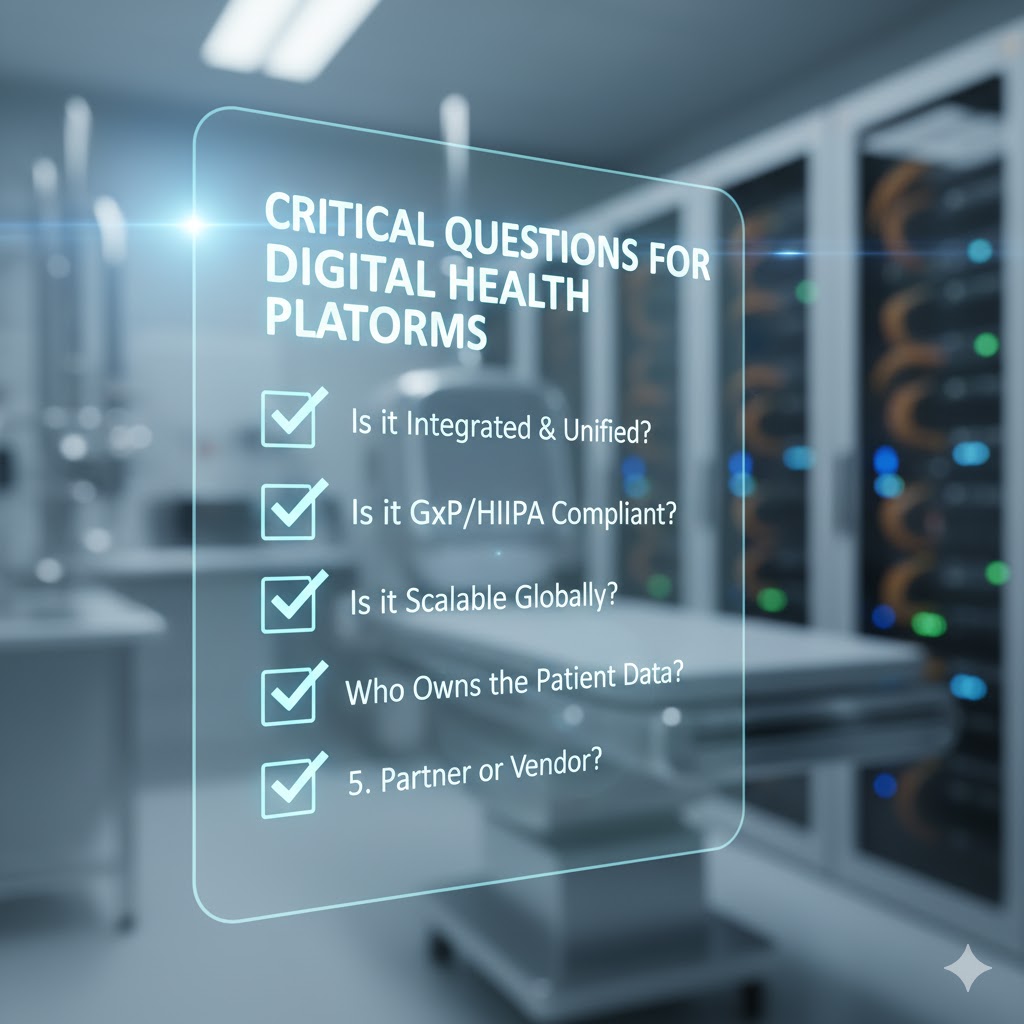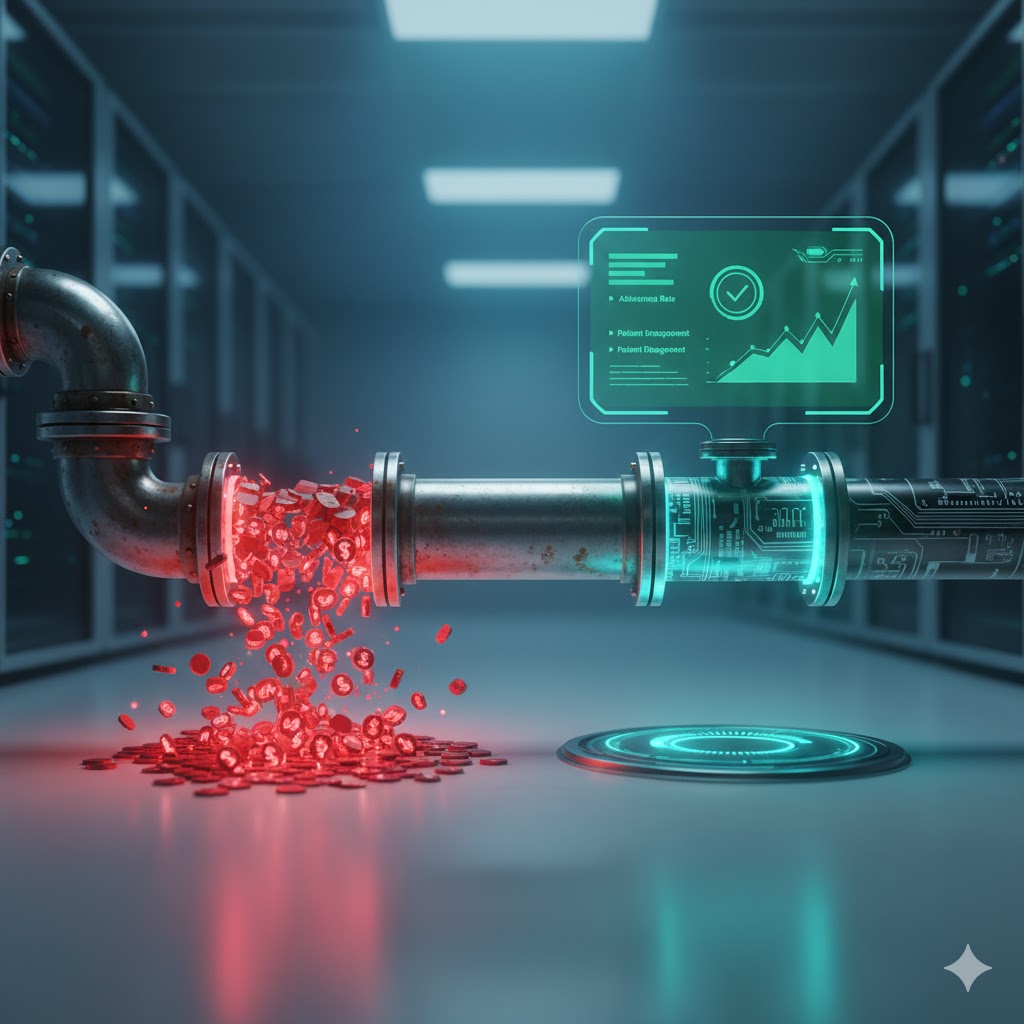Role of Sensor Cloud in Smart Healthcare
Introduction
The global smart healthcare market is experiencing rapid growth. It is projected to reach a value of USD 1,097.27 billion by 2032. The predicted growth can be attributed to the advancement in information technology, particularly in IoT and process automation.
The foundation of smart healthcare lies in patient-based systems utilizing devices for remote patient monitoring that bridge the gap between the modern world and electronic health records. The components of smart healthcare include clinic, geographical, and community aspects. It leverages IoT technology and process automation to optimize patient care practices and implement new features.
This aspect of smart healthcare integrates mobile computers, smart cities, and personnel into hospital administration networks. It all adds up to enabling efficient patient identification, staff oversight, and equipment tracking.
Therefore, smart healthcare involves three main stages: sensor tracking of vital signs, connectivity of personal medical devices (PMDs) to the Internet or cloud servers, and data analysis by healthcare professionals.
In addition to hospital operations, smart healthcare extends to the pharmaceutical sector, facilitating intelligent manufacturing, distribution, and anti-counterfeiting measures for drugs.
A key aspect of smart healthcare is the use of RFID technology. This technology assigns a specific RFID tag to each individual for reliable and efficient distribution of hospital materials. RFID also has patient-tracking capabilities. Its use can reduce waiting times by automatically displaying the phase in which a patient is in. The transparency afforded by this technology for patients and staff in the surgical trajectory improves patient flow and reduces wait times.
Smart healthcare uses an operational control framework for resource selection, quality monitoring, and decision-making. The framework ultimately minimizes patient costs and optimizes resource usage. Patients benefit from enhanced healthcare services, including digital consultations and streamlined doctor-patient experiences.
Wireless Sensor Networks and Predictive Healthcare
A Wireless Sensor Network (WSN) is a technological system that transmits data without using physical cables. Within this technology, sensors are strategically placed to read temperature, pressure, sound, and humidity from the surrounding environment. These sensors gather information and communicate that data. The above definition means that a sensor measures a physical quantity and converts it into a format that an observer or an instrument can understand.
Healthcare applications employing Wireless Sensor Network (WSN) technology are rapidly becoming a healthcare essentiality. The WSN technology assures flexibility, mobility, and the ability to continuously monitor patients inside and outside hospital settings, including intensive care units (ICUs). The system focuses on remote patient monitoring, offering rich contextual information, alerting mechanisms for unusual conditions, and constant surveillance. Its deployment sets up a path for Predictive healthcare. The latter significantly reduces the need for caregivers and promotes independent living for the chronically ill and elderly.
By integrating sensing and consumer electronics, these systems enable continuous monitoring, memory enhancement, home appliance control, access to medical data, and emergency communication within homes. These predictive healthcare networks aid residents and caregivers and facilitate early detection of emergencies and diseases in at-risk patients.
Sensor Cloud Technology in Smart Healthcare
Despite all of the above giving a shout-out to WSN technology, there are glitches that need to be fixed. WSN faces many challenges and limitations in processing, storage, memory, scalability, security, availability, etc. Sensor cloud has become an active part of smart healthcare in resolving issues inherent in WSN.
So what is Sensor cloud? It is the integration of WSN with cloud computing. It has multiple applications running on each sensor node concurrently with the help of virtualization. With this approach, sensor resources are shared to execute multiple applications simultaneously. In traditional WSN, the status of a particular node position can only be ascertained by considering the positions of all nodes. This process is a tedious and time-consuming task. The virtualization in the sensor cloud minimizes the time consumed.
Sensor cloud is the new cloud computing system. It uses physical sensors to collect and pass data into cloud computing infrastructure. It is then used for many monitoring applications.
The inclusion of sensor cloud in healthcare infrastructure has enabled the use of machine learning techniques for smart healthcare provisioning. These technologies, coupled with machine learning, are emerging technologies most appropriate for a proactive healthcare system. Their usage provides advancement in various aspects, like computational capability, data storage, and learning techniques.
SensorCloud serves many purposes, especially when extensive sensor networks require remote data collection, observation, and management. It finds significant utility in applications such as structural health monitoring and condition-based tracking of patients. In these contexts, conventional data tools often lack accessibility, scalability, programmability, or efficiency.
Sensor Cloud uniquely hinges a wide range of wearable sensors and manages digital health technology data for clinical trials. Its common data model and proprietary algorithms enable rapid ingestion and analysis of patient data. This prompt and quick analysis of incoming patient data results in better clinical decision-making, faster timelines, and a more flexible patient experience.
Sensor Cloud Architecture for Smart Healthcare
1. Physical Sensor Layer:
This layer has various physical sensors on and around the patient to collect health-related data. These sensors would be wearable devices like biosensors, environmental sensors, etc. The data collected by these sensors is then transmitted to the cloud.
2. Virtual Sensor Creation Module:
This module dynamically creates and updates virtual sensors as and when requisitioned by the medical staff or the patient’s health status. It takes input from physical sensors and patient records to determine the need for additional virtual sensors. For example, if a patient's heart rate exceeds a certain threshold, a virtual sensor for cardiac health monitoring could be dynamically created.
3. Event Detection and Triggering Module:
This module detects sensitive events in the patient's health status or the status of associated physical sensors. When such events occur, it triggers the creation or modification of virtual sensors as needed. For instance, if an accelerometer detects a fall, a virtual sensor for fall detection and alerting would come into play.
4. Virtual Sensor Configuration and Management Module:
This module handles the configuration and management of virtual sensors. It enhances configuration of virtual sensors by adding functions such as monitoring, maintenance, power saving, and security.
5. Data Processing and Analysis Layer:
This layer processes the data sent to it by physical and virtual sensors. It has algorithms for real-time data analysis, anomaly detection, predictive analytics, and decision support. The processed data is then used to generate insights, alerts, and recommendations for medical staff.
6. Cloud Infrastructure:
The sensor cloud architecture is built on top of cloud computing infrastructure. It is built to upgrade scalability, reliability, and accessibility. And it provides services for data storage, processing, and communication. Cloud resources are dynamically allocated and scaled based on demand to accommodate varying workloads.
7. Integration with Healthcare Systems:
The sensor cloud architecture is then integrated with the existing healthcare information systems. One can now access patient records, medical histories, and treatment plans using the integrated system. This healthcare system enables contextual analysis of sensor data and enhances the effectiveness of healthcare interventions.
8. Simulation and Evaluation Module:
This module carries out simulations to assess the efficacy of the proposed architecture. It simulates various scenarios like scalability, reliability, and responsiveness. The results of simulations will suggest refinements and optimizations of the architecture.
By incorporating these components and modules, the proposed sensor cloud architecture for smart healthcare can provide comprehensive monitoring and support for high-risk patients while addressing medical staff's needs and ensuring efficient resource use.
The Value of Sensor Cloud in Smart Healthcare
Sensor cloud is steadily gaining a foothold in the healthcare industry. It is a new paradigm for making healthcare smarter and more accessible. Its adoption and integration offer opportunities to enhance patient care and manage clinical trials. Sensor Cloud Network is a dynamic platform to harness sensor data to its fullest and foster collaborative innovation across the healthcare ecosystem. It carries different values for different stakeholders.
For Empowering Patients:
One of Sensor Cloud Network's primary advantages is its ability to empower patients by revolutionizing the traditional clinical trial experience. Patients can participate in trials more conveniently through wearable sensors and connected health devices. Their use reduces the need for frequent site visits, minimizing travel time and financial inconvenience. On the research and development front Sensor Cloud Network facilitates the development of new treatments by enabling non-invasive data collection at higher frequencies and with medical-grade precision.
Facilitating Industry-Wide Collaboration:
Sensor Cloud Network catalyzes collaboration. It brings together stakeholders from diverse sectors, including Contract Research Organizations (CROs), sensor manufacturers, sponsors, analytics companies, and academia. Sensor Cloud Network drives innovation and accelerates the pace of discovery by fostering a collaborative environment. The collaborative collegium focuses on overcoming challenges related to sensor integration, data standardization, and developing digital biomarkers and algorithms. The platform enables industry-wide collaboration through shared resources, cutting-edge tools, and comprehensive training initiatives.
Pioneering Next-Generation Solutions:
Sensor Cloud Network offers a comprehensive approach to managing wearable sensor and digital health technology data. It integrates seamlessly with existing data platforms, streamlines processes, and optimizes efficiency. Sensor Cloud Network empowers researchers, sponsors, and research sites to reach new insights, execute informed decision-making, and collectively improve patient outcomes. Through its advanced capabilities and innovative features, Sensor Cloud Network is poised to revolutionize clinical trial management and patient care.
Sensor Cloud Network represents a paradigm shift in smart healthcare, leveraging the power of sensor data to drive innovation, facilitate collaboration, and enhance patient-centric care.
Conclusion
Healthcare is in a time and space where it can implement smart disease control, predictive disease diagnoses, virtual care, and smart health management aided by remote patient monitoring and inclusive decision-making. Healthcare, today is seeing various technologies seamlessly associating and graduating to bring about patient-centric services like remote patient monitoring, tracking and virtual clinics, emotive telemedicine, ambient assisted living, and personalized and connected healthcare. The coming in of Sensor cloud technology will give a fillip to other emerging technologies like nanotechnology, 5G technologies, drone technology, blockchain, robotics, big data, the Internet of Things, artificial intelligence, and cloud computing.





